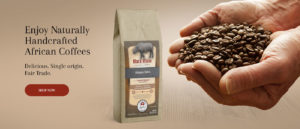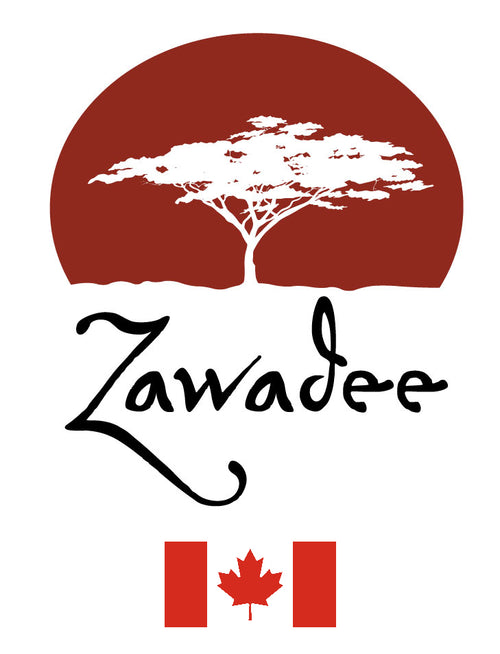Living On The Brink: The Omo Valley Tribes of Ethiopia
The Omo Valley in southern Ethiopia is as picturesque as it comes. Hills, mountains, rivers, graceful waterfalls, jungles and numerous exotic wild animals and plants all converge in this one area. The grand Omo River snakes through the region emptying in Lake Turkana at the Kenyan border.
 The earliest known discovery of human fossil fragments was found in the lower Omo Valley and Lake Turkana (which is mostly in Kenya). With this precious discovery, the area was declared a World Heritage site by the United Nations Educational Scientific and Cultural Organization (UNESCO).
The earliest known discovery of human fossil fragments was found in the lower Omo Valley and Lake Turkana (which is mostly in Kenya). With this precious discovery, the area was declared a World Heritage site by the United Nations Educational Scientific and Cultural Organization (UNESCO).
 Nestled in this beautiful setting are 15 tribal groups living in the hills and the banks along the Omo River.
It’s estimated that over 200,000 tribal people call the Omo Valley home. In this isolated corner of the world, these tribes have lived for centuries developing their own distinct and rich customs. Each tribe has different body markings, clothing, hairstyles and beliefs.
The Tribes
A diverse group of people live in the Omo Valley. But the various tribes in the region do share some commonalities, such as their reliance on the Omo River as an essential resource. Most tribes rely on the annual flooding of the river. Cattle, goats and sheep are also essential to most of the tribes’ livelihoods.
For the tribes, traditions are important and many involve some sort of body adornment or fancy headdress.
Nestled in this beautiful setting are 15 tribal groups living in the hills and the banks along the Omo River.
It’s estimated that over 200,000 tribal people call the Omo Valley home. In this isolated corner of the world, these tribes have lived for centuries developing their own distinct and rich customs. Each tribe has different body markings, clothing, hairstyles and beliefs.
The Tribes
A diverse group of people live in the Omo Valley. But the various tribes in the region do share some commonalities, such as their reliance on the Omo River as an essential resource. Most tribes rely on the annual flooding of the river. Cattle, goats and sheep are also essential to most of the tribes’ livelihoods.
For the tribes, traditions are important and many involve some sort of body adornment or fancy headdress.




 The earliest known discovery of human fossil fragments was found in the lower Omo Valley and Lake Turkana (which is mostly in Kenya). With this precious discovery, the area was declared a World Heritage site by the United Nations Educational Scientific and Cultural Organization (UNESCO).
The earliest known discovery of human fossil fragments was found in the lower Omo Valley and Lake Turkana (which is mostly in Kenya). With this precious discovery, the area was declared a World Heritage site by the United Nations Educational Scientific and Cultural Organization (UNESCO).
 Nestled in this beautiful setting are 15 tribal groups living in the hills and the banks along the Omo River.
It’s estimated that over 200,000 tribal people call the Omo Valley home. In this isolated corner of the world, these tribes have lived for centuries developing their own distinct and rich customs. Each tribe has different body markings, clothing, hairstyles and beliefs.
The Tribes
A diverse group of people live in the Omo Valley. But the various tribes in the region do share some commonalities, such as their reliance on the Omo River as an essential resource. Most tribes rely on the annual flooding of the river. Cattle, goats and sheep are also essential to most of the tribes’ livelihoods.
For the tribes, traditions are important and many involve some sort of body adornment or fancy headdress.
Nestled in this beautiful setting are 15 tribal groups living in the hills and the banks along the Omo River.
It’s estimated that over 200,000 tribal people call the Omo Valley home. In this isolated corner of the world, these tribes have lived for centuries developing their own distinct and rich customs. Each tribe has different body markings, clothing, hairstyles and beliefs.
The Tribes
A diverse group of people live in the Omo Valley. But the various tribes in the region do share some commonalities, such as their reliance on the Omo River as an essential resource. Most tribes rely on the annual flooding of the river. Cattle, goats and sheep are also essential to most of the tribes’ livelihoods.
For the tribes, traditions are important and many involve some sort of body adornment or fancy headdress.
 photo credit: Dassanech Girl, Omerate, Ethiopia via photopin (license)
photo credit: Dassanech Girl, Omerate, Ethiopia via photopin (license)
- The Mursi: The Mursi’s traditions include body painting, decorative scarring and piercing. Some Mursi women still hold onto the tradition of piercing and then slowly stretching their lower lip with a clay plate, up to 18cm (7in) wide. The lip plate is done to attract a spouse. There are few mirrors around so boys usually paint one another with elaborate designs. Mothers paint their babies, so the traditions start young.
- The Suri Tribe: The Suri use flora and fauna for decoration. They make elaborate head ornaments from leaves and branches.
- The Karo Tribe: The Karo paint their bodies and faces with white chalk to prepare for ceremonies. They sometimes wear face masks and clay hair buns with feathers stuck into them. The women sometimes scar their chests, believing it makes them beautiful. Men also scar themselves, representing an enemy or dangerous animal they’ve killed.
- The Hamar (also known as the Hammer or Hamer) Tribe: The Hamar people wear colorful bracelets and beads in their hair. Some women wear circular wedge necklaces to show they are married. Men wear hair ornaments to represent a kill of an enemy or animal. Men also paint themselves with white chalk for ceremonies.


Try our Ethiopian Micro-Lot Coffee - Small Batches, Single-Origin
Try our Ethiopian Micro-Lot Coffee - Small Batches, Single-Origin






 We guarantee you'll love this dish. Some recipes we've seen suggest a dollop of yogurt on top just before serving. It is delicious!
We love sharing our family recipes with you but please remember you can search online and find lots of variations on this dish and other terrific African recipes. An online recipe site we use over and over again is
We guarantee you'll love this dish. Some recipes we've seen suggest a dollop of yogurt on top just before serving. It is delicious!
We love sharing our family recipes with you but please remember you can search online and find lots of variations on this dish and other terrific African recipes. An online recipe site we use over and over again is 
 For centuries, Ethiopian Christians have claimed that the Ark of the Covenant is housed in a chapel in the town of Aksum, located in the northern highlands of the Tigray state.
The Chapel of the Tablet at the Church of Our Lady Mary of Zion in Axum allegedly houses the original Ark of the Covenant.
For centuries, Ethiopian Christians have claimed that the Ark of the Covenant is housed in a chapel in the town of Aksum, located in the northern highlands of the Tigray state.
The Chapel of the Tablet at the Church of Our Lady Mary of Zion in Axum allegedly houses the original Ark of the Covenant.
 The Tigray and the Amhara people were converted to Christianity hundreds of years before most of Europe. The arrival of Christianity in Tigrayan lands is dated to about the same time as Christianity arrived in Ireland.
The church is a very central feature of Tigray communities, most communities having a church with a patron saint. Most Tigray holidays are associated with the church calendar.
Tigray art is also associated with the church. The church architecture alone is amazing with many churches cut into solid stone (as pictured below). Icon painting is also popular.
The Tigray and the Amhara people were converted to Christianity hundreds of years before most of Europe. The arrival of Christianity in Tigrayan lands is dated to about the same time as Christianity arrived in Ireland.
The church is a very central feature of Tigray communities, most communities having a church with a patron saint. Most Tigray holidays are associated with the church calendar.
Tigray art is also associated with the church. The church architecture alone is amazing with many churches cut into solid stone (as pictured below). Icon painting is also popular.

 Church music and praise songs are important to the Tigray. Church deacons may sing and accompany the voices with drums and a marroca-like, shaken instrument called at "sistrum".
A game much like field hockey is played but in a cross-country manner! Some seriously sports-minded Tigray "grow" their own hockey sticks by training saplings into the desired curve. While like field hockey, the Tigray play across country - even through creeks and over fences! Now that's track and field combined with field hockey!
The Tigray are a fascinating people, with interesting customs and traditions.
Don't miss any of our articles, blogs, updates or recipes! Sign up for email updates.
Church music and praise songs are important to the Tigray. Church deacons may sing and accompany the voices with drums and a marroca-like, shaken instrument called at "sistrum".
A game much like field hockey is played but in a cross-country manner! Some seriously sports-minded Tigray "grow" their own hockey sticks by training saplings into the desired curve. While like field hockey, the Tigray play across country - even through creeks and over fences! Now that's track and field combined with field hockey!
The Tigray are a fascinating people, with interesting customs and traditions.
Don't miss any of our articles, blogs, updates or recipes! Sign up for email updates.